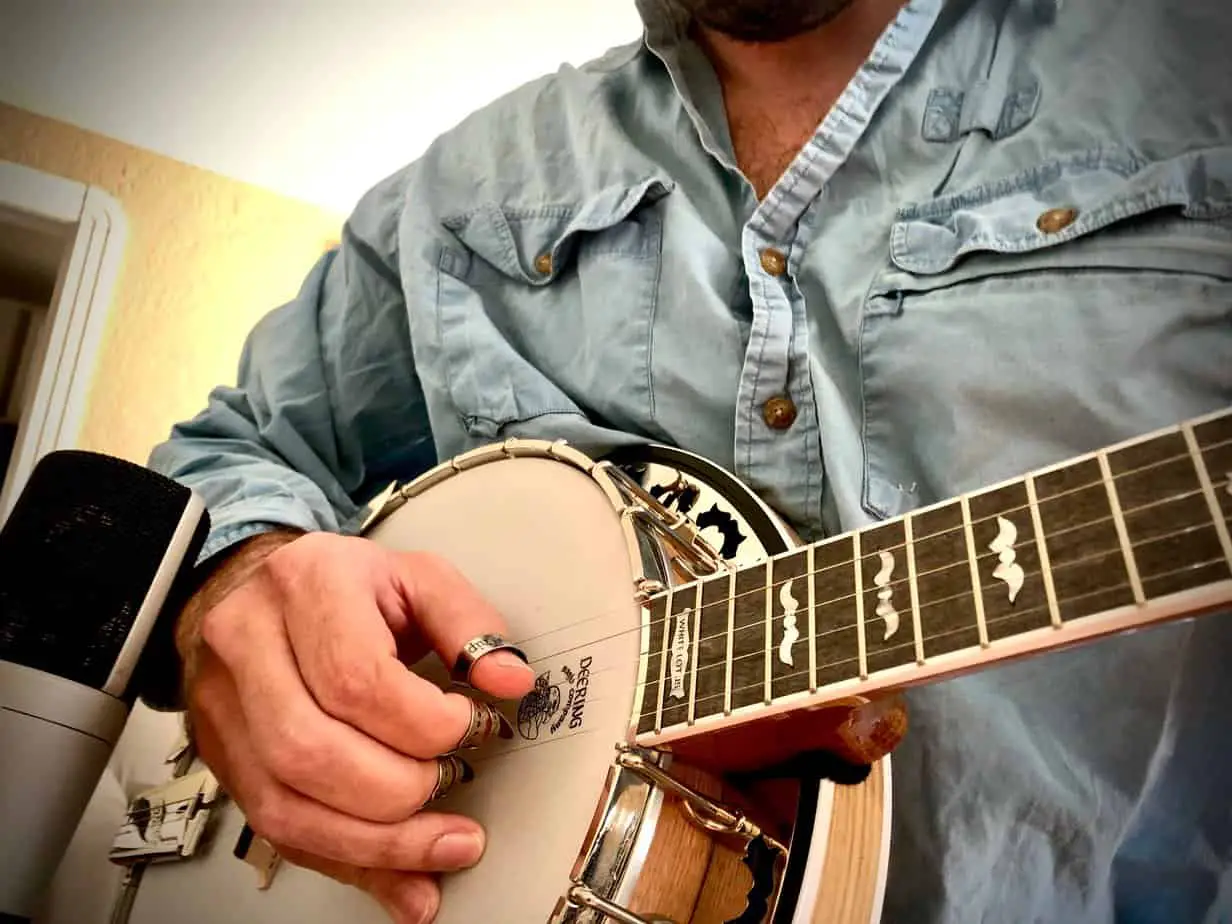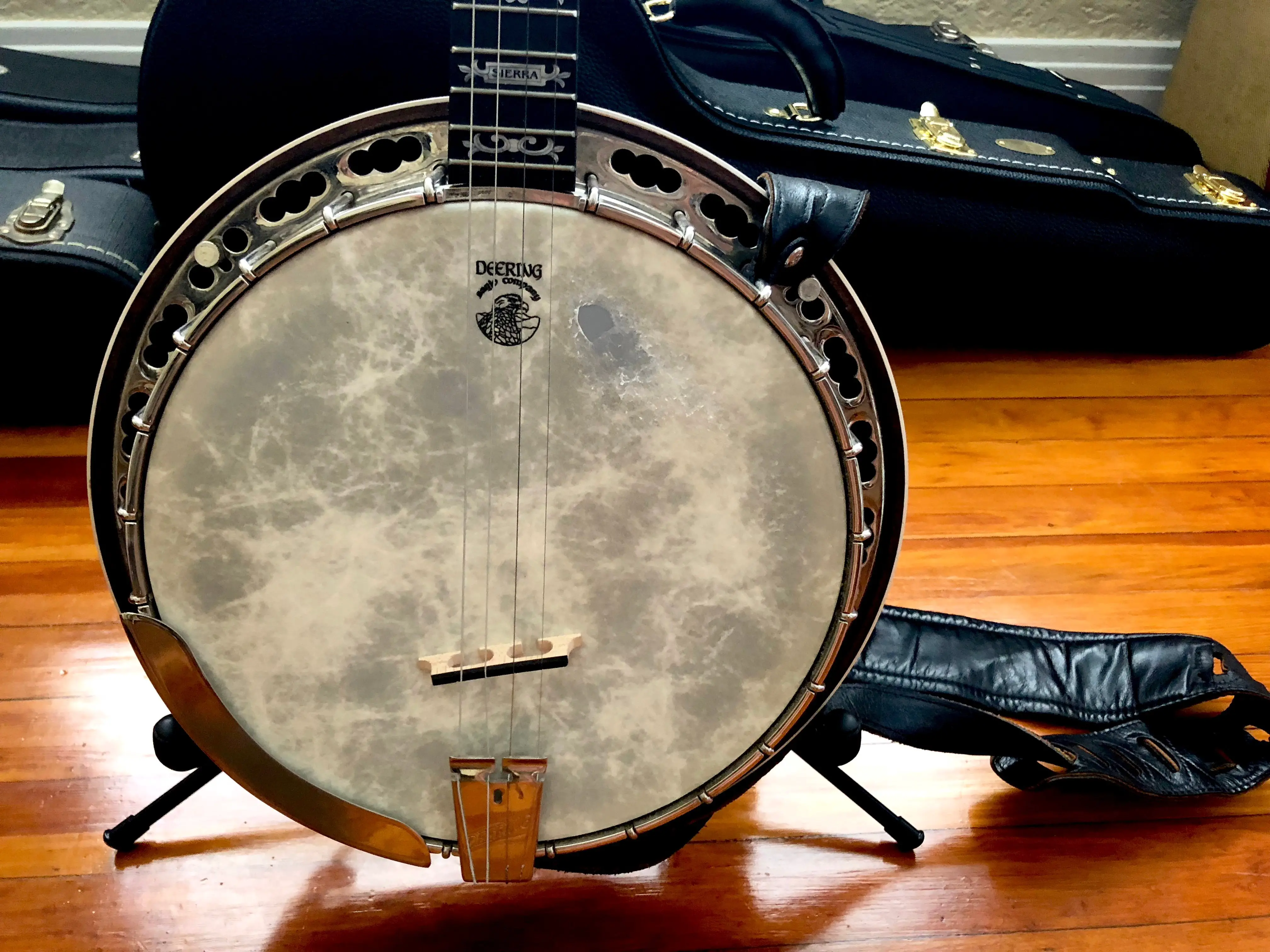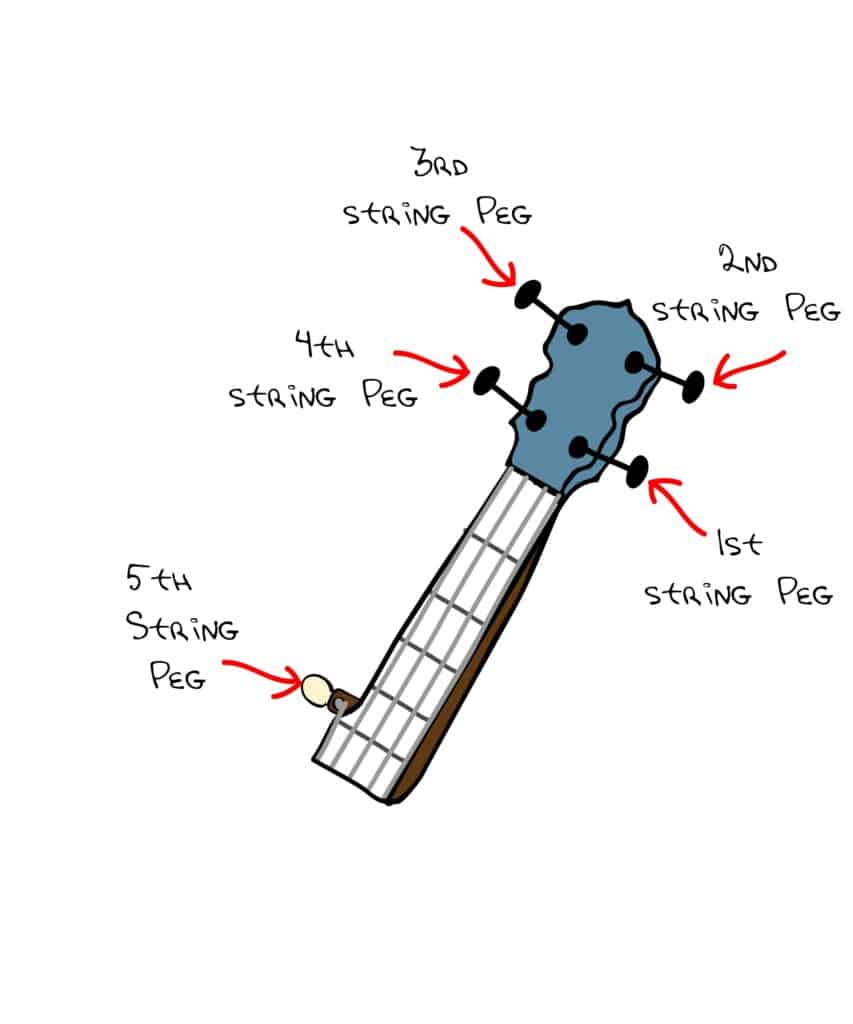Tuning a four string banjo can be a daunting task, especially if you are new to the instrument. However, with the right steps and a bit of patience, it doesn’t have to be so hard. In this article, I will walk you through the process of how to tune a four string banjo, so you can start playing confidently and sounding great. I’ll provide a step-by-step guide that will have you playing in no time. So let’s get started!
Parts of a Banjo
| Part | Description |
|---|---|
| Head | A drum head or membrane stretched over the banjo’s wooden rim. |
| Rim | A circular wooden piece that the head is stretched over. |
| Fretboard | The long rectangular piece that the frets are embedded into. |
| Frets | The metal pieces embedded in the fretboard. |
| Tuners | The pegs at the head of the banjo that are used to adjust the pitch of the strings. |
| Strings | A metal string attached at one end to the tuners and at the other end to the bridge. |
| Bridge | The piece of wood that the strings are attached to and that transmits the vibrations of the strings to the head of the banjo. |
Basic Tuning Process
Tuning a four string banjo involves adjusting the tension of the strings to achieve the desired sound. To begin, locate the tuning pegs on the banjo’s head. These pegs are located on the side of the head and can be turned by hand. Starting from the fourth string, use a tuning fork, guitar tuner, or online tuner to determine the correct pitch of the string. Starting with the fourth string, tune the string to the desired pitch and move to the next string. Repeat the process until all strings are tuned to the desired pitch. Tuning should be checked regularly, especially after playing for extended periods. If the strings start to sound out of tune, adjust the tuning pegs accordingly.
Tuning with a Reference Pitch
- Using a tuner, set the G string to the desired reference pitch
- Adjust the string tension to match the reference pitch
- Fret the 4th fret of the G string and compare the sound to the C string open
- If necessary, adjust the C string tuning to match the 4th fret of the G string
- Fret the 5th fret of the C string and compare the sound to the D string open
- If necessary, adjust the D string tuning to match the 5th fret of the C string
- Fret the 5th fret of the D string and compare the sound to the A string open
- If necessary, adjust the A string tuning to match the 5th fret of the D string
- Tuning is complete when all strings are in tune with the reference pitch
Measuring Pitch with an Electronic Tuner
Using an electronic tuner is a great way to get your banjo in tune quickly and accurately. To use an electronic tuner, start by connecting it to your banjo – either by plugging it into the banjo’s output jack or by clipping it on to the instrument’s headstock. Then, pluck each string of your banjo one at a time and compare the sound of the note to the reference note displayed on the tuner. If the two notes are not the same, use the tuning pegs to adjust the pitch of the string until the two notes match.
| String | Reference Note |
|---|---|
| String 1 | G |
| String 2 | D |
| String 3 | B |
| String 4 | G |
Once the string is in tune, move on to the next string and repeat the process. When all four strings are in tune, your banjo is ready to play.
Tuning the 4th String
- Identify the 4th string on your banjo. On a 4-string banjo, this is the highest pitched string.
- Turn the tuning peg for the 4th string until the string is taut.
- Using a chromatic tuner, pluck the 4th string and adjust the tuning peg until the 4th string reads D4 on the tuner.
- Once the 4th string is in tune, move on to tuning the remaining strings.
Tuning the 3rd String
| Note | Tuning |
|---|---|
| 3rd String (G) | D |
The 3rd string is tuned to the note D. To do this, pluck the 3rd string and turn the tuning peg until the note matches the note D played on the 4th string.
Tuning the 2nd String
- Tune the 2nd string by placing your finger on the 5th fret of the 3rd string.
- Pluck the 2nd string and adjust the tuning peg until the notes sound the same.
- Once the notes are in unison, the 2nd string is in tune.
Tuning the 1st String
- Locate the tuning peg for the 1st string.
- Turn the peg clockwise until the string is tight.
- Pluck the string and adjust the tuning peg until the string is tuned.
- Compare the sound of the 1st string to the 4th string, which is tuned to a D note.
- Continue adjusting the 1st string peg until the two strings sound the same.
Final Tuning
- Tune the 3rd string, A, a minor 3rd above the 2nd string, D.
- Tune the 4th string, E, a major 3rd above the 3rd string, A.
- Tune the 1st string, G, two octaves higher than the 4th string, E.
Frequently Asked Questions
What type of strings should I use for a four string banjo?
For a four string banjo, it is recommended to use a medium gauge string set, which typically includes a .010, .012, .016, and .024 string. Nylon strings are often used for banjos, though other materials may be used as well. If you are unsure of which strings to use, consult with a professional or do some research to find the best strings for your banjo.
How do I know when my four string banjo is in tune?
To determine if your four string banjo is in tune, listen for a unison of notes when you strike each string. If your notes are in tune, you should hear a clear ringing tone. You can also use a tuning meter to measure the pitch of your strings, or use an electronic tuner device to check if your strings are in tune.
What tools will I need to tune a four string banjo?
To tune a four string banjo, you will need a banjo tuning key, a digital tuner, a metronome, and a pitch pipe. The banjo tuning key is a specialized tool which can be used to adjust the tension of the strings on the banjo. A digital tuner is used to detect the pitch of the notes being played, while a metronome helps to keep a steady tempo. Lastly, a pitch pipe is used to determine the exact frequency of a note.
Are There Any Special Techniques I Should Use When Tuning A Four String Banjo?
Four string banjos are tuned to an open G tuning (DGBD), which is different from other string instruments. As such, some special techniques should be used when tuning a four string banjo. To achieve the best sound, use an electronic tuner to bring each string to pitch. Also, tune the banjo in fourths instead of fifths, as this will make the strings easier to play. Lastly, be sure to check the tuning often, as temperature and humidity can affect the strings and cause them to go out of tune.
What should I do if I can’t get my four string banjo in tune?
If you have been unable to tune your four string banjo with the help of tuning keys or other methods, you may need to adjust the bridge or check the strings for any wear and tear. If the bridge is too low or too high, it can make tuning difficult. If the strings are worn out, they may need to be replaced. Additionally, checking the head of the banjo for any damage or wear and tear can help in ensuring the tuning process is successful.
Conclusion
Tuning a four-string banjo is a simple and straightforward process that even a beginner can accomplish with a few basic tools. Tuning the banjo to the correct pitch is essential for producing a good sound. It is important to check for tuning discrepancies regularly to ensure that the banjo stays in tune. With a bit of practice and patience, you will be able to confidently and accurately tune your four-string banjo.








